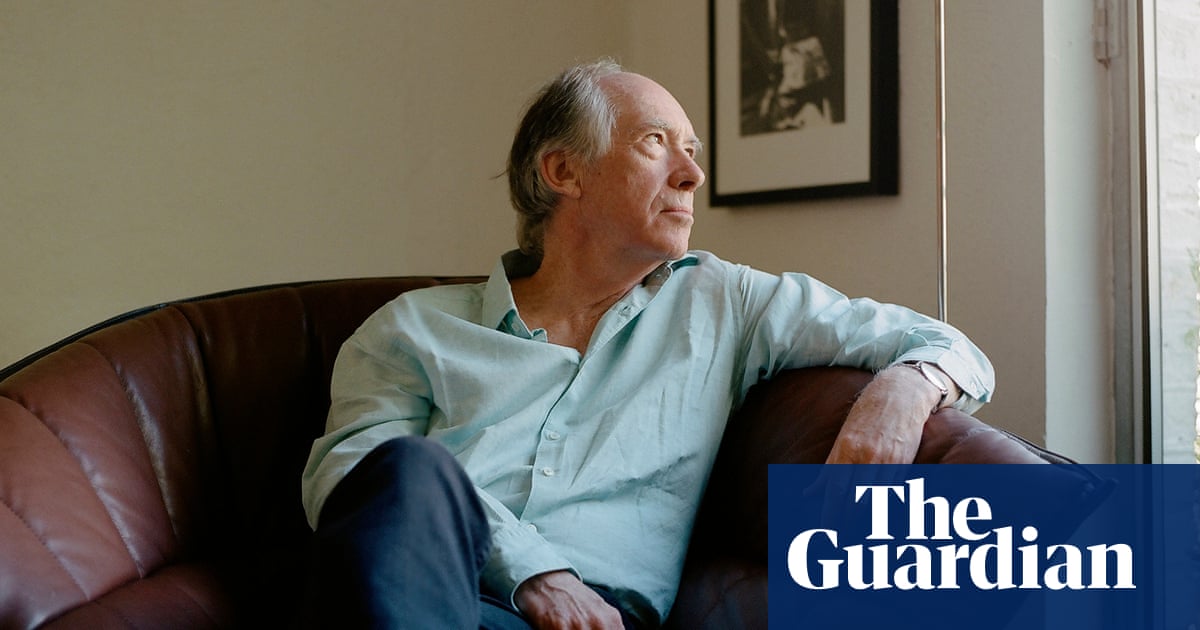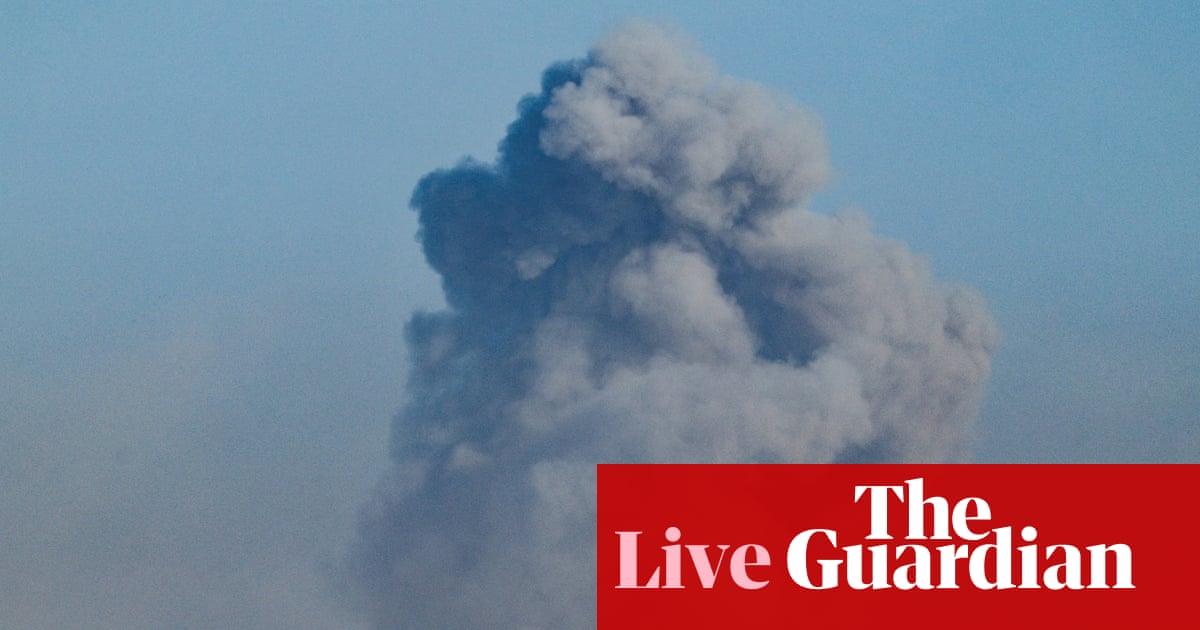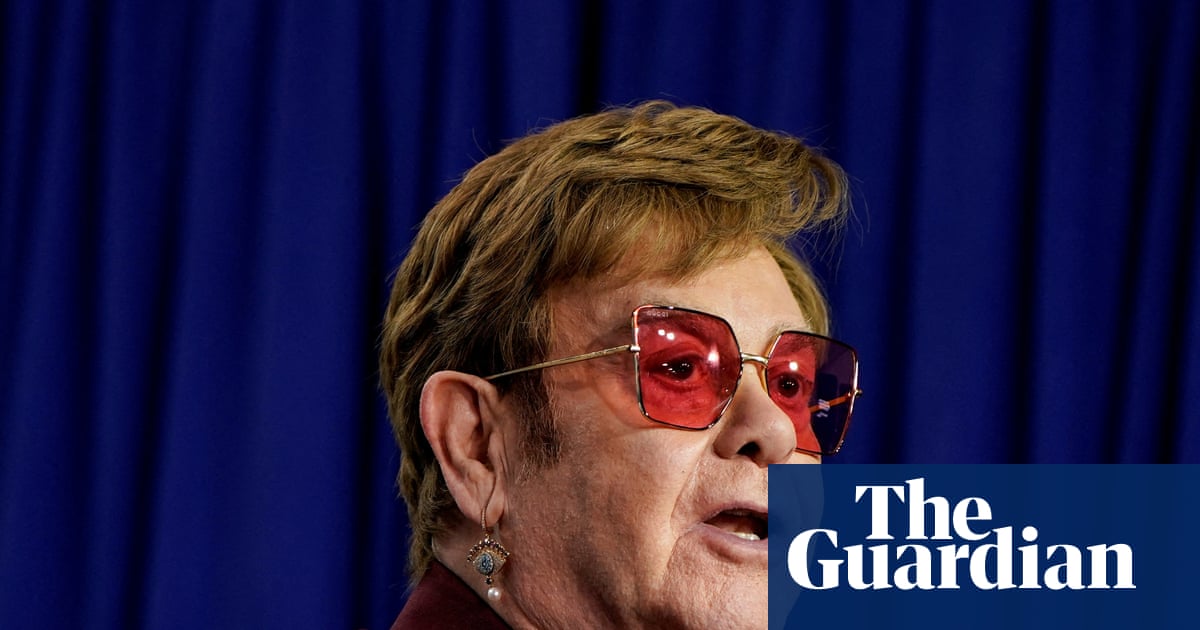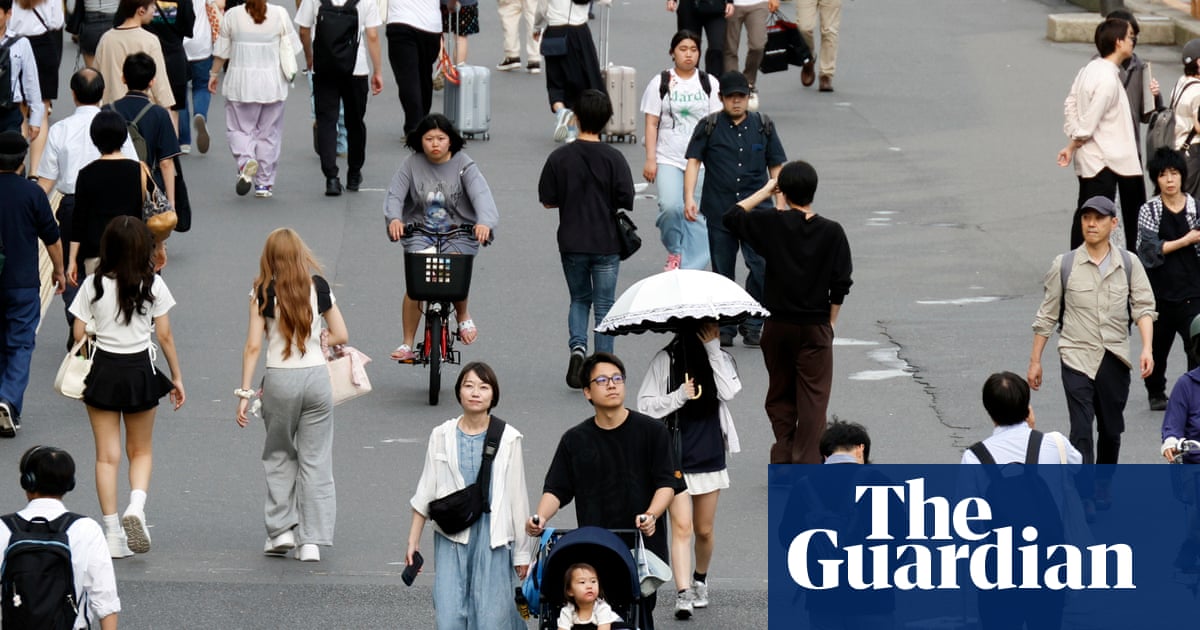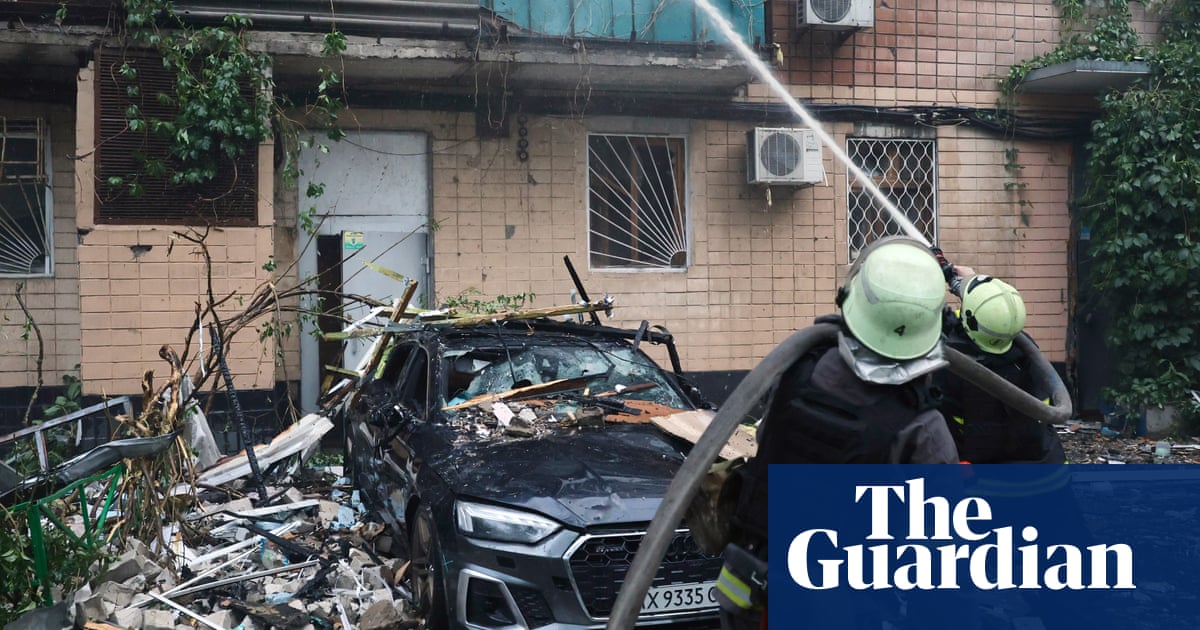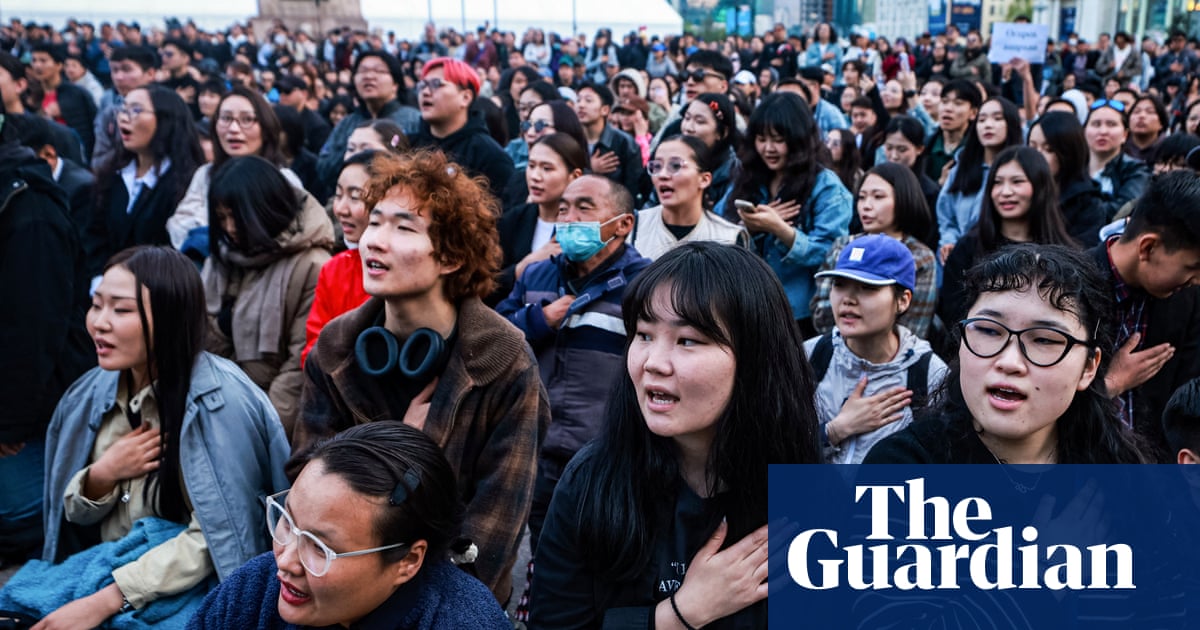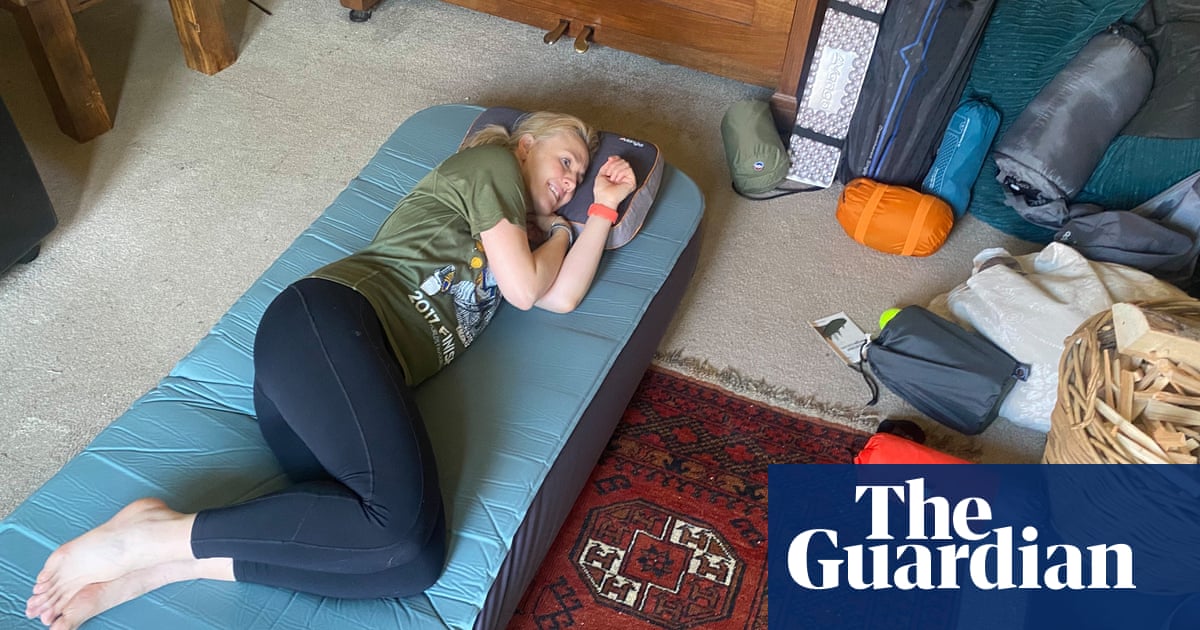When Adam Scott was working on the hit TV show Parks and Recreation in the early 2010s, the Los Angeles studio where the show was filmed was packed – “every stage was filled and working”.
These days, he told his former co-star Rob Lowe in a much-discussed recent podcast conversation, “it’s quiet over there” – in part because “it’s just too expensive to shoot here”.
“Nothing shoots in Los Angeles,” Scott said.
“Nothing!” Lowe replied.
The two television stars are a case in point. Severance, Scott’s hit sci-fi streaming show, has been largely filmed in New York and New Jersey. And this year, both actors are scheduled to shoot projects in Ireland – Scott for a horror film with an Irish director, but Lowe as the host of an American game show with American contestants.
The reason, Lowe argued, was money, particularly the massive tax credits that other jurisdictions offer film studios to bring their productions outside of Hollywood.
“It’s cheaper to bring 100 American people to Ireland than to walk across the lot at Fox, past the sound stages, and do it there,” Lowe said.
Hollywood has long faced competition for its film production business, both from other US states like New York, Georgia, New Mexico, and from the UK and European countries. Many of those places offer generous tax credits to productions who shoot in their localities. The UK in recent years has seen a major boost in prestige film and TV productions set there, with Britain earning the nickname “Brollywood”. Even the film Barbie, a quintessentially California tale, was partially shot in the Warner Bros studios in Hertfordshire.
But in the wake of the devastating Los Angeles fires this January, this drop in the number of productions shot in Hollywood has begun to spark panic and anger within the industry.
Recent statistics highlight the reason for concern. The number of productions shot on location in Los Angeles has dropped more than 30% in the past five years, with 2024 recording one of the lowest number of total shoot days in decades, second only to 2020, during the disruptions of the coronavirus pandemic. According to Film LA, a nonprofit that tracks local production, only 20% of shows for North American audiences are now filmed in California.
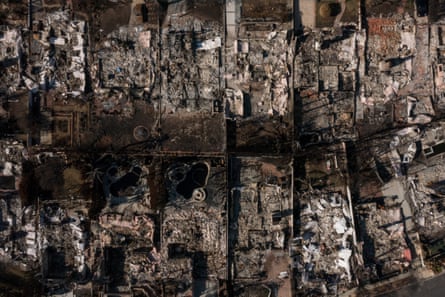
Los Angeles’s struggles come amid a larger contraction in the global film and TV industry, with studios pulling back from the big-budget era of the streaming wars amid broader economic uncertainty.
But some in the industry worry that California discounted its global competitors for too long – and that it may now pay a permanent price.
“When it’s a homegrown industry, you sometimes take it a little bit for granted. You don’t recognize that there’s a possibility that it can dissipate, or go elsewhere,” said Rebecca Rhine, the western executive director of the Directors Guild of America, and the president of the Entertainment Union Coalition, an alliance of seven major Hollywood unions. “I think it was maybe some arrogance, and maybe some lack of foresight.”
A large coalition of Hollywood workers are now rallying for California to increase its tax credits for film and TV shoots from 20 to 25% to 35%, to make the state more competitive with other states and countries that offer as much as 40% in tax credits.
Democratic Governor Gavin Newsom has proposed more than doubling California’s current film and TV tax credit program from $330m to $750m.
The need is dire, according to workers in many segments of the California industry. Officials with the International Alliance of Theatrical Stage Employees (Iatse) estimate that in the past three years, their members alone have seen roughly 18,000 jobs disappear, most of those jobs in California.
“The last couple of years have been pretty devastating,” said Malakhi Simmons, the vice-president of Iatse local 728, representing studio electrical lighting technicians. “Our members are used to jobs starting and stopping. There’s a culture of hanging on till the next job, [but] with the contraction of the industry, those jobs haven’t come back.”

Donald Trump’s contribution to the debate was a recent social media suggestion that he protect Hollywood by imposing tariffs on films shot outside the US, a stray remark that has roiled an already chaotic situation. A-list stars and blue-collar Hollywood workers are now pushing to bring more production back to Los Angeles, with the help of streamlining and tax subsidies at the city, state, and even national level.
“There are so many people I know who do everything they can do shoot here, and their perspective is, ‘It doesn’t even have to get me exactly there on the [tax credit] percentage, it just has to be close enough, because on everything else, California wins,” said Susan Sprung, the CEO of the Producers Guild.
But with Los Angeles facing a $1bn budget shortfall, and California as a whole facing a deficit of $12bn, and social programs of all kinds facing big cuts, not everyone is on board with devoting hundreds of millions to boost Hollywood productions.
Film credits and filming fees
Alexandra Pechman, a Los Angeles-based writer and director, is one of nearly 25,000 Hollywood workers and other locals who backed a petition early this year asking California officials to offer three years of expanded tax credits to productions filming in Los Angeles in the wake of this winter’s historically damaging wildfires.
“You learn very quickly, as a screenwriter or director in Los Angeles, seeing your peers constantly leaving the city, that there’s incentives to be filming pretty much anywhere other than LA,” said Pechman, one of the co-founders of the Stay in LA movement.
Preparing the budget for her independent feature film, The Murderous Miss Highsmith, had given her a first-hand look at the complex math of international tax credits.
Her film, which she is still laying the groundwork to shootexplores the fraught life of Patricia Highsmith, the author of The Talented Mr Ripley. It’s set in Italy, Santa Fe and London, but to meet its budget, the film will have to shoot in a single location, one approved by the project’s financial backers.
Pechman considered a range of European countries, looking at “what tax incentives program offers us the best route”. She recalls that Hungary offered a 30% rebate at the time, and Croatia also up to 30%. Italy was offering an even higher rate, but her film’s financier ultimately preferred Malta, which was offering a 40% tax rebate. “Malta will just play as those places, and we would shoot some interiors that are meant to be New York, or other cities, in Malta,” she said.
For film productions to get a tax rebate, Pechman said, they need to spend a certain amount of money, but many kinds of expenses qualified, from travel agents, to lodging, to catering – “so that’s all obviously boosting the local economy”.
Governments often also demand employment quotas in certain departments of the film to qualify for film productions tax rebate, so film productions bringing in technical talent from the US also need to hire a certain percentage of local talent, “so a lot of shows end up hiring a lot of trainees”.
When she was scouting in Malta last summer, she said, she met a lot of experienced local film workers “who had come up through these trainee programs”.
“That’s exactly what’s not happening here [in Los Angeles],” she said. “People are graduating from USC film school and moving to LA to start their careers, and there aren’t these programs and incentives to help people get their foot in the door.”
Pechman’s husband is a showrunner who has shot in many different cities, from Winnipeg to Toronto to Atlanta, she said. “He’s never shot a show in LA,” except for some exterior LA shots for a show otherwise filmed in Canada.
“We just have to do something, or people are going to leave,” she added.
Other factors
Another big ire is permits. Getting permits to shoot across the Los Angeles area can be expensive and logistically difficult, even for smaller crews that work on documentary and commercial shoots.
“Whenever you’re interfacing with the government [in LA], those systems don’t totally feel like they’re up to speed with the modern era,” said Aaron Ohlmann, a director and executive producer at the production company Special Order.
At one recent shoot, “we had to pay a third party $2,000 to manage those permits,” he said. At another, which was “a quiet interview in someone’s living room”, he said, “we paid $1,000 for a FilmLA monitor who did not once lift his eyes from the glow of his phone. An additional $85 went to a fire marshal who never arrived. The permit itself was $900.”
Pechman said she was shocked to find that it was much easier to do a small shoot on the streets of New York City than in Los Angeles – even though virtually every part of Los Angeles sees much less foot traffic than the packed avenues of Manhattan.
In many public areas of New York City, it’s possible to film without a permit as long as the crew and the gear are limited, she said. “You cannot do that in LA.”
FilmLA, the nonprofit created to coordinate permitting across the many different cities of greater Los Angeles, raised its fees last year.
The permitting fees and restrictions in Los Angeles are especially burdensome for film student and indie filmmakers, who argue “it’s already hard enough right now” in the industry, Pechman said, and they emerged as an important concern in Stay in LA’s grassroots advocacy.
FilmLA, an independent non-profit, receives no government funding, and part of its fees go to paying for the work of the agency as it coordinates permits across the many jurisdictions of the greater Los Angeles area. Paul Audley, the group’s president, defended its fees as “cost-competitive” and “in line with regional averages”, and said that “film offices from across the world reach out to study FilmLA and how we work”.
In late May, Los Angeles mayor Karen Bass announced that she wanted to make it easier to film in LA, directing city departments to reduce red tape and cut some costs and fees, and make it easier to film at city-owned properties such as Griffith Observatory, changes the Los Angeles Times called “relatively modest”.
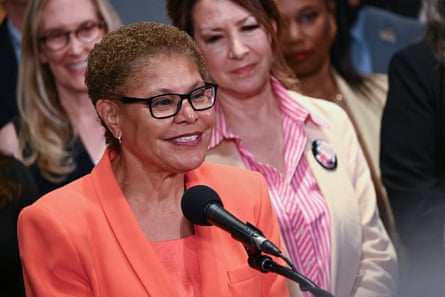
But Audley said Bass’s proposal could have a big impact on fees, because “municipal oversight is the biggest cost factor. Fully 60% of permit-related cost comes from use of public property and public safety personnel.”
While some have pointed at labor cost increases as a factor in driving productions abroad, union leaders have pushed back at suggestions that wins for labor in 2023’s historic double Hollywood strike have rebounded and contributed to the decline in Los Angeles production rates.
“We reject the idea that somehow paying people decent wages and providing benefits and retirements with dignity is the problem,” Rhine, the Entertainment Union Coalition head, said.
“We do not believe that wage increases have anything to do with productions moving overseas or out of state,” a spokesperson for Sag-Aftra said in a statement, saying the union attributed the recent decreases to tax incentives elsewhere, currency exchange rates, and the “overall drop in the market demand for scripted, dramatic programming”.
Global shifts
The big tax subsidies other countries are offering to film and TV productions came alongside a broader democratization of media production around the globe. The shift has been driven in part by the increasing quality and decreasing prices of cameras and other film technology–making production more accessible to many more people, said Ohlmann, the documentary director and producer.
Decades ago, “if you wanted to work with film, you had to come to LA: the technology was here, the people were here–anything that shakes loose rolls west”, he said. “Now, “you have technology in the hands of storytellers, and the ability to access an audience everywhere – and you see less reason to be all collecting in a single place”.
Ohlmann and his colleagues, who have done small-crew shoots in 60 countries around the world, used to plan “completely self-contained” international shoots, with every crew member and camera flown in. Now, he said, “the world has gotten smaller, and it’s easier to travel lighter, because you know you’ll be able to pick up talent and gear more easily”.
When Werner Herzog was in the Amazon shooting his 1972 epic Aguirre, the Wrath of God, “and their director of photography gets yellow fever or their film camera gets dropped into the bottom of the Amazon, they were out of luck”, Ohlmann said. Today, a similar film shoot could probably find a replacement camera, and someone’s cousin who knew how to operate it, “a couple miles from where they were shooting”.
Even through this globalization of the film industry, LA has remained a major gathering place for film workers. Though they have technology that theoretically allows editors to work remotely “from anywhere in the world”, most editors that Special Order hires are still in New York or Los Angeles, because “it’s still hard to match the level of talent you see in LA.”
But locals are now worrying that the LA’s creative workforce is being pushed to a tipping point, after five years of economic hardship, first during the pandemic, then as production halted during the writers’ and actors’ strikes, and now, as fears about artificial intelligence stealing jobs overlap with the terror and devastation of southern California’s growing wildfires.
Sky-high housing costs across California had already made daily life a struggle for most people trying to work in Hollywood: in Los Angeles, a family of three with an annual income of more than $100,000 a year is now considered “low income”, and the median price for a home is more than $1m.
The destruction of thousands of homes in January’s wildfires only made the local housing crisis worse. About 300 Iatse union members lost their homes to the fires, Simmons said. Across the broader entertainment union community, he said, the number was at least 1,000 members.
“Our members are really hurting,” he said. Longtime workers “are running out of savings, moving to other states or staying with family”.
Newer workers who have come into the field more recently “are losing faith”.
“What our members need most are jobs,” he said. “Jobs create that stability to rebuild.”
A wide swathe of unions have backed increases in California’s tax credits for film and TV production, with workers showing up to lobby state lawmakers in Sacramento, and sending an estimated 200,000 letters in support of the increases, arguing that the tax credits are not a handout to big corporations, but an essential local jobs program.
Not everyone believes the tax credits are the answer to the industry’s problems. Michael Thom, a University of Southern California professor who researches the economic impact of these tax credits across the US, submitted testimony to state lawmakers that multiple peer reviewed studies found that the “incentives fail to stimulate enough economic activity to justify their substantial cost”.
Thom said he was not surprised that lawmakers in New York, California, and elsewhere continued to support spending hundreds of millions of public dollars on film industry subsidies despite their lackluster returns.
“Film incentives, like those for other industries, are hard to resist: they allow politicians to give away taxpayer money (not their own, of course) and label themselves a ‘job creator’,” Thom wrote in an email. “Couple that with intense lobbying from the industry, unions, and some bureaucrats, and it’s a foregone conclusion that politicians will continue to waste money on these things.”
Corey Jackson, a Democratic member of the state assembly with a doctoral degree in social work, has also spoken out about the need to prioritize core social services, not film industry subsidies, during California’s budget crisis.
“If we were back in the period where we have more money than we can spend, this would be a no-brainer,” Jackson told the Los Angeles Times. But in the current economic environment, “this should not just be a slam-dunk”.
Union leaders and others argue that the film industry is more deeply embedded in Southern California’s economy than in other states, and that more film production will have a ripple effect, helping everyone from florists to hotel workers to the mechanics who manage the airplanes that big budget films blow up.
“It’s an emergency,” Pechman said. “Hollywood could be a place where people go to the Walk of Fame and say: ‘Oooh, this is where people used to make movies.’”

.png) 3 months ago
40
3 months ago
40

